On solstices, eclipses and equinox day, Tibetan Buddhists have the practice of the Kunzang Monlam, also known as “Kuntuzangpo Aspiration Prayer.”
This prayer begins with the well known phrase, “a single ground, yet two paths and two fruits…”
“Ho! Everything – appearance and existence, samsara and nirvana, has a single ground, yet two paths and two fruitions, and magically displays as awareness or unawareness.”
This refers to what Buddhist’s Great Perfection philosophy regards as the key to all life. That which gives rise to samsara, or nirvana is awareness and un-awareness. Without awareness our lives get taken over by habitual patterns of cyclic dissatisfaction, confusion and suffering. This cycle of un-awareness, “samsara” in Sanskrit, the term for cycles of suffering. The practice of Buddhists is to wake up from this unconscious cycle.
About the Kunzang Monlam
In the Kunzang Monlam prayer we remember that awareness is the most important and decisive element in life. We resolve to understand how our perceptions of the world color our experience. We resolve to recognize our own projections and delusions. We become alert to our relationship with emotions. We acknowledge that the quality of our decisions, our relationships with others and our experience of “the world” are all decided based on the quality of our awareness. Therefore, from the lens of the Kunzang Monlam, Buddhism could be regarded as functioning as a science, art, philosophy, poetry and religion of clarifying awareness.
The Kunzang Monlam prayer begins as the primordial buddha named “Total Goodness,” makes the wish that all beings would awaken to natural goodness. This prayer points out that whether one is awake or not entirely depends on perception. When reality is perceived as it is – that is wakefulness, the goal of the Buddhist path. The prayer says,
Through Kuntuzangpo, the Primordial buddha of Total Goodness, may all beings fully awaken perfected in the palace of the vast expanse (dharmadhatu).
The ground of all reality is uncontrived, and the self-arising great expanse, beyond expression. It has neither the name “samsara” nor “nirvana.”
Realizing just this you are a Buddha; not realizing this you are a being wandering in samsara. May all beings of the three realms realize the inexpressible ground of being.
I, Kuntuzangpo, have realized that ground, without cause and unconditioned. It is just this self-arising awareness. It is unstained by outer expression and inner thought, affirmation or denial. It is unobscured by the darkness of un-awareness. Thus this natural self-manifesting display is faultless.
I, Kuntuzangpo, abide as intrinsic awareness. If self-awareness remains in place, even though the three-fold world were to be destroyed, there is no fear. There is no grasping to the five desirable qualities of sense objects. In self-arising awareness beyond conceptuality, there is neither solid form nor the five poisons.
In the unceasing radiance of awareness, singular in essence, arises the five aspects of awareness. From the ripening of these five aspects of awareness are the five wisdoms, the five original Buddhas emerge, and through the expanse of their wisdom, the 42 peaceful Buddhas appear. Through the arising creativity of the five wisdoms, the 60 wrathful Herukas manifest. Thus the ground awareness [even as it manifests] never becomes confused.
I, Kuntuzangpo, am the original Buddha of all, and through this prayer of mine, may all beings who wander in the six realms of samsara realize this self-originating awareness and may great wisdom spontaneously expand.
My emanations are an unceasing stream. I will continuously manifest in billions of inconceivable ways, appearing in forms to help beings who can be trained. May all beings of the six realms escape the destinies of the six types of karma.
You can listen to the prayer and watch the video here:
In the Kunzang Monlam the entire prayer outlines the way in which mind unfolds, from our mental habits come the projections that infect all our interactions with our own karmic propensities. This is how habitual mind states and beliefs about self manifest in our circumstances. It discusses the mental poisons and the six realms of suffering, how these all begin with unawareness of our own nature.
Alternatively, whenever presence of awareness is available then genuine and direct communication with our world is possible. Awareness itself becomes the basis for an intrinsic confidence, because we practice relating more and more directly with what is in front of us rather than being so caught up in our anxieties, interpretations and agendas. Thus, my favorite line of this prayer says, “If self-awareness remains in place, even though the three-fold world were to be destroyed, there is no fear.”
This natural confidence is said to arise because the root of all fear is the disassociation from our natural goodness. Because we have lost touch with our authentic nature, we get stuck acting out a fictive self. In the face of the intensities of our life, that fictive self is inadequate, and we sense this. It is contrived and so it gives way to fundamental anxiety, because it cannot be trusted as a ground to rest into. Only by letting that fictive self go – to reside in awareness of our natural goodness – can genuine confidence be found.
Who is Kuntuzangpo?
The prayer is named after “Total Goodness,” Kuntuzangpo, which is a Tibetan name of the Buddha which represents the primordial benevolence, purity and wisdom underlying all phenomena. In Sanskrit this same this Buddha is called “Samantabhadra.”
You may recognize this Buddha “Kuntuzangpo/Samantabhadra” by the image.
It is an image of a male and female buddha in union, this is the Dzogchen vision of reality. Reality is said to be non-dual and therefore represents the union of the full spectrum of male and female energies of the universe. Two buddhas are shown in union, Kuntuzangpo and Kuntuzangpo, the primordial male and female buddhas. Potentially this could include gender spectrum however other images in Buddhism lend themselves more fully to that interpretation such as Avalokiteshvara.
Lunar & Solar Days
The reason the Kunzang Monlam practice is done on solstices, equinoxes and eclipse days is because of the Buddhist concepts of the body-mind system.
Astrology in India and Tibet
The Body-mind system is understood as a network of vital energy, winds and centers, known as the tsa, lung and thigle in Tibetan language. On eclipse days, that system is believed to be disrupted, leaving a person more weak and vulnerable to impending forces. Such warnings appear in different types of Buddhist literature such as the Kalachakra or the Gyud zhi, the four medical tantras, as well as throughout Indian, Chinese and Tibetan astrology. For example:
Chakrapani Ullal was a famous Indian astrologer who visited our dharma center numerous times to give talks about lunar cycles. He describes these eclipse phenomena, “Many people don’t realize that an eclipse refers to a period of time that the energy from any given luminary is obstructed. An eclipse of the sun or the moon, considered the life-giving planets, is a most inauspicious period. During either a solar or lunar eclipse, these planets’ critical energy is blocked and there is an increase in the content of carbon dioxide in the atmosphere. This has adverse health effects, especially on those of weak constitution or whoever may already be suffering from some health complaint. Depending on the birth chart, some people are more vulnerable to these transits than others….Generally speaking, an eclipse adversely affects the health and vitality of any new undertaking, so we try to avoid starting something significant during the period of an eclipse. Depending on the particulars, the effects of an eclipse lasts between one to three months, with the most intense effects immediately surrounding the actual eclipse date.”
In Tibetan Buddhism, there is also the notion that the effects of actions on such days are multiplied. So this is one of the reasons that spiritual practices such as the Kunzang Monlam or mantra practices in general are undertaken on such days. The eclipse day in particular is considered inauspicious for any other kind of activity besides spiritual practice.
Science, mysticism or both?
Are there actually changes in our mind body complex during eclipses or is this just a matter of religious imagination? Western science does discuss environmental variables effected by eclipses such as changes in terms of electrons, magnetic field, ionizing radiation, ultraviolet radiation, migration patterns of species which vary during eclipse cycles and more. How do such changes effect the body and mind of meditators from a biological perspective? This would be interesting research to see since the lunar cycles are a major factor in the timing of Tibetan Buddhist contemplative practices and ritual. When meditation research focuses on the practice alone, it may be omitting important factors related to physical, environmental and social contexts.
How to Practice the Prayer for Eclipses, Equinoxes, Earthquakes
The Kunzang Monlam is a Vajrayana practice, so traditionally speaking, one has to receive initiation and instructions to practice this prayer from a Tibetan Buddhist teacher. That initiation gives a special ingredient to practice which serves as permission, introduction and a direct encounter with the meaning of the practice. However, anyone can read the prayer or listen to it and benefit from it. This is why it is read at the bedside of dying people to help them recognize the nature of mind.
Here the Vajrayana Foundation has published the full text of the Kunzang Monlam in Tibetan, Phonetics and English.



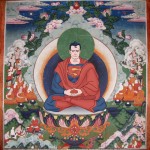
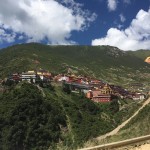
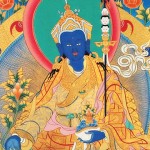
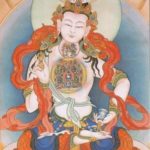

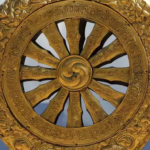


Thank you. The importance of the solstice and equinox is so overlooked in western culture.
It is true respected Rinpoche, mind is everything, if we can tame our mind with awareness than it is great victory…
Wow, Thankyou so much. What a beautiful prayer! Wow.
Hi Gayle, Yes its so true! Its amazing how solstices and equinoxes are very specific days for Tibetan Medicine when certain practices are avoided and others are favored. Likewise in Tibetan Buddhism these are times for spiritual practice. So in Tibetan traditions they are important! – Happy New Year! Pema Khandro
Dear Alisha, Yes its so true – that is the essence of Buddhism, ultimate victory, ultimate journey, Good luck to us all!
Pema Khandro
Dear Laura,
Glad you enjoyed it!
Pema Khandro
Thank you Rinpoche,
I am blessed by this offering and offer my gratitude in return. Thank you.
I was under the impression that a new moon was a good time to plant a seed, and that durring an ecplise this seeds merit might be magnified. Can you clarify this for me please?
Thank you.
Dear Rhiannon, I am glad you enjoyed this article. Thank you for the interesting question. I have been taught that in Tibetan Buddhism, the view is that spiritual practices done on eclipses days have greater effect, their merit is multiplied. However, I don’t have definitive knowledge about Tibetan Buddhist teachings on planting and agricultural cycles or Tibetan Medicine traditions of seed planting during eclipses. Me not knowing of it certainly does not imply that such teachings don’t exist. Tibetan Buddhism is vast, so there are always more teachings. Tibetan Buddhism is also diverse, so there may be particular teachings in one lineage that appear differently from tradition to another. I do know that in Tibetan Medicine planting particular herbs on particular days for particular affects is observed. Here is a link to a scholarly article which discusses Tibetan seasonal botanical knowledge. Best warmest wishes, Pema Khandro